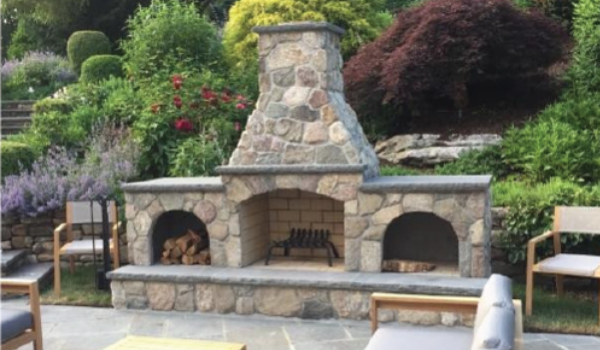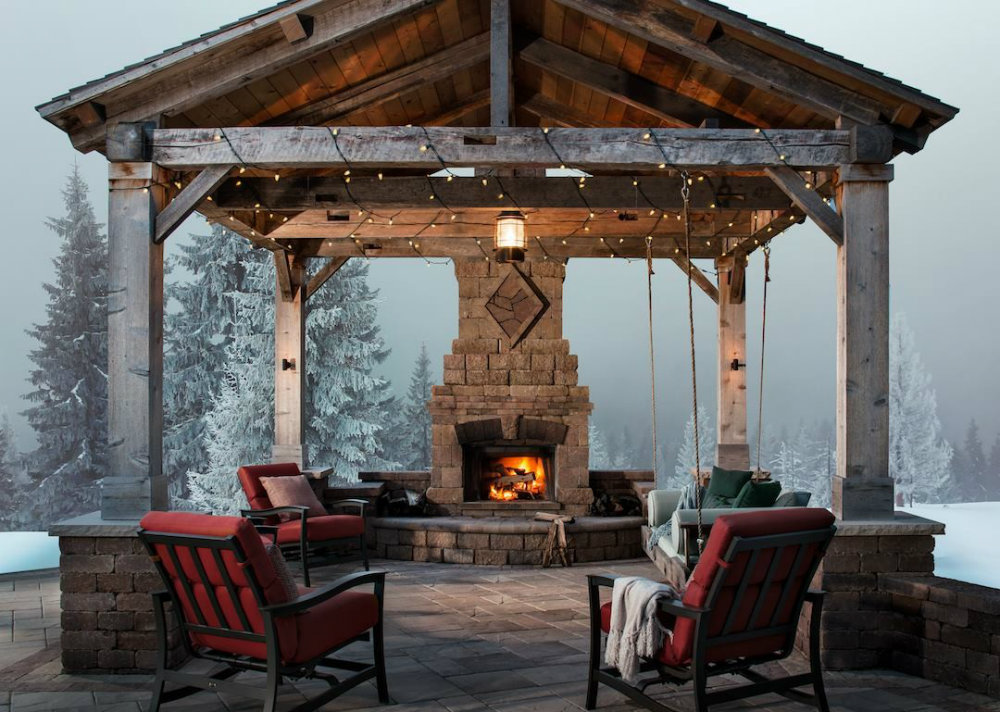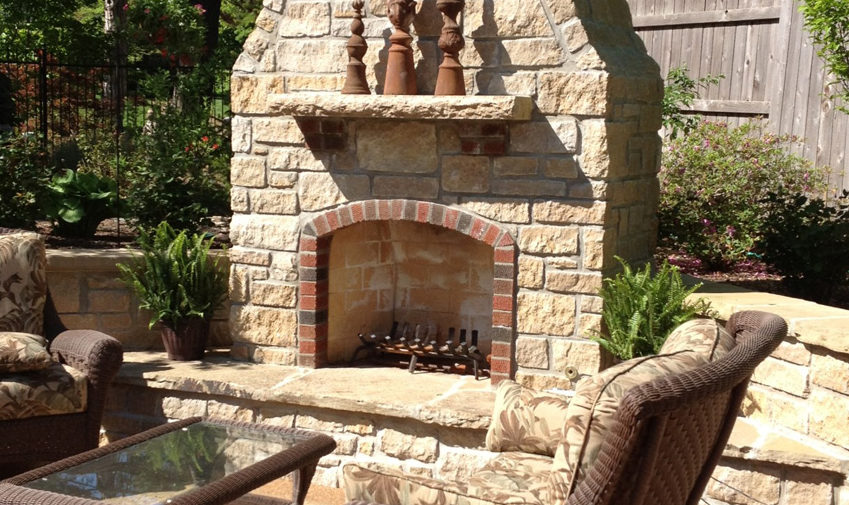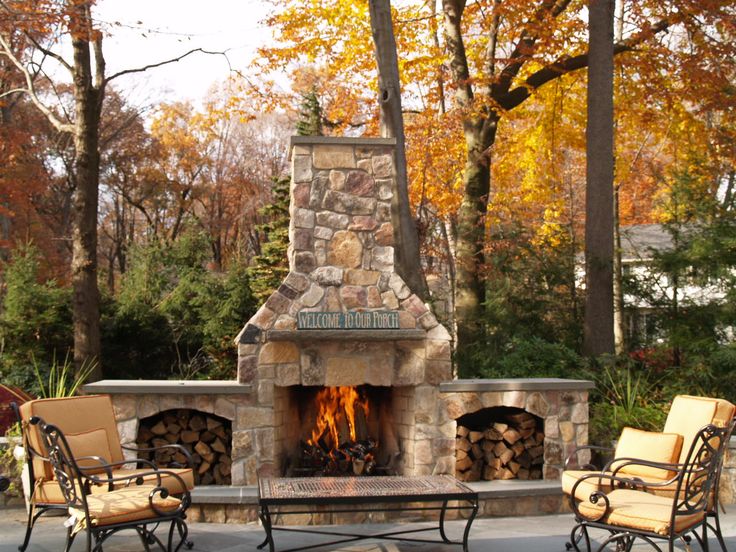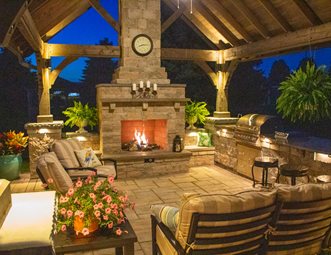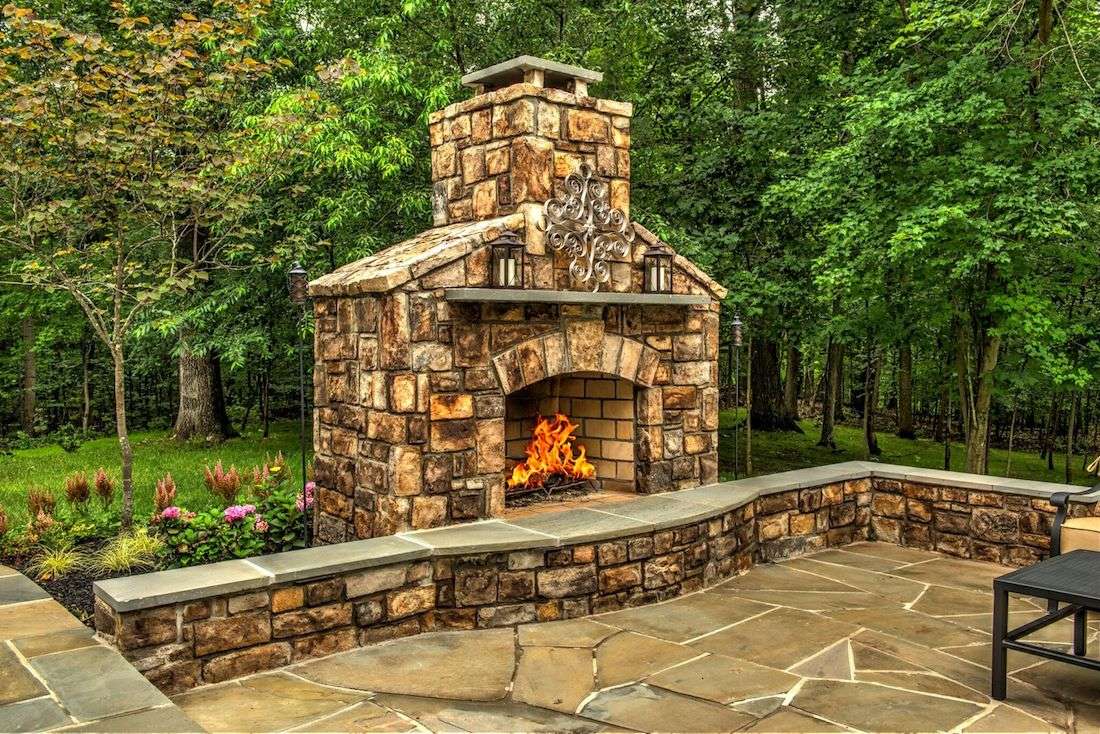An outdoor rock fireplace transforms any backyard into a cozy, inviting space perfect for gatherings and relaxation. These natural-looking structures provide warmth, ambiance, and a striking focal point for outdoor living areas. Whether built with rugged fieldstone, sleek stacked slate, or rustic river rock, each design brings a unique character to the landscape. Homeowners can choose from traditional wood-burning models or modern gas-powered options, depending on their preferences for convenience and maintenance. With proper planning and design, an outdoor rock fireplace becomes a durable, long-lasting addition that enhances both functionality and curb appeal.
Natural Stone vs. Manufactured Stone: Choosing the Right Material
Natural stone offers an authentic, timeless look with unique textures and color variations. Fieldstone, limestone, and granite are popular choices, each providing distinct visual appeal and durability. Since natural stone is quarried directly from the earth, no two pieces are identical, creating a one-of-a-kind fireplace. However, it can be heavier and more challenging to work with, often requiring professional installation for structural stability.
Manufactured stone, or cultured stone, is a lightweight alternative designed to mimic natural rock. Made from concrete and pigments, it provides consistent sizing and color, making installation easier for DIY enthusiasts. While less expensive than natural stone, high-quality manufactured options still deliver a realistic appearance. Some varieties even include weather-resistant coatings to prevent fading and wear over time.
The choice between natural and manufactured stone depends on budget, desired aesthetics, and installation preferences. Natural stone suits those seeking an organic, high-end look, while manufactured stone offers affordability and easier handling. Both options can create a stunning outdoor fireplace when properly designed and constructed.
Classic vs. Modern Rock Fireplace Styles
Traditional rock fireplaces often feature a rustic, rough-hewn appearance with irregular stone shapes and earthy tones. These designs complement cabins, farmhouses, and woodland settings, evoking a cozy, old-world charm. A large hearth and mantel add functionality for cooking or displaying décor, while a chimney directs smoke efficiently. Many wood-burning models include built-in log storage for convenience.
Contemporary rock fireplaces lean toward clean lines, minimalist shapes, and smooth finishes. Stacked slate or geometric stone patterns create a sleek, modern aesthetic that pairs well with urban and minimalist landscapes. Gas-powered versions eliminate the need for wood storage, offering a more polished look. Some designs incorporate fire glass or linear burners for a striking visual effect.
The style choice depends on the overall outdoor design theme. Classic fireplaces enhance traditional or natural settings, while modern designs suit patios with concrete, metal, or minimalist landscaping. Both styles benefit from proper stone selection and professional craftsmanship to ensure longevity and visual harmony.
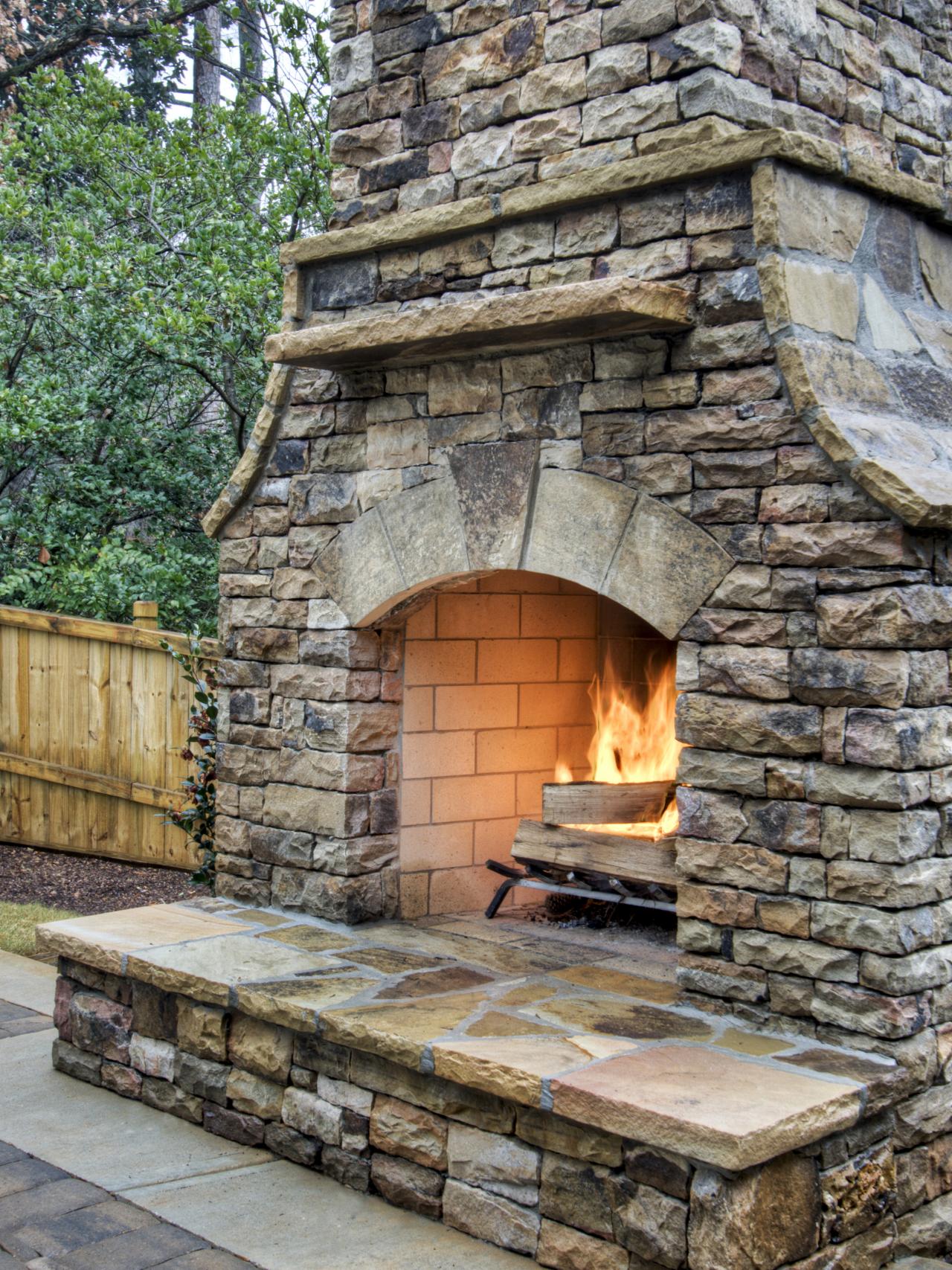
Key Design Considerations for Functionality
Size and placement are crucial for both safety and usability. The fireplace should be proportionate to the outdoor space, allowing enough room for seating without overwhelming the area. Local building codes often dictate minimum clearance distances from structures and overhanging trees. A well-placed fireplace becomes a natural gathering spot while maintaining safe ventilation.
Venting and fuel type impact functionality. Wood-burning fireplaces require proper chimney design to minimize smoke issues, while gas models need secure gas line installation. Some homeowners opt for hybrid designs that accommodate both wood and gas, offering flexibility. A raised firebox improves heat distribution and reduces sparks, making the fireplace safer for surrounding surfaces.
Additional features like built-in seating, cooking grates, or storage niches enhance practicality. A wide hearth provides space for food prep or setting drinks, while a mantel offers a display room for décor. Thoughtful design ensures the fireplace is as functional as it is beautiful.
Landscaping Integration for a Seamless Look
A well-designed rock fireplace should blend naturally with the surrounding landscape. Incorporating similar stone in retaining walls, pathways, or water features creates a cohesive outdoor aesthetic. Softscape elements like ornamental grasses, shrubs, or climbing vines help soften the fireplace’s hard edges.
Lighting plays a key role in highlighting the fireplace after dark. Subtle uplighting emphasizes the stone’s texture, while pathway lights improve safety and ambiance. Fire bowls or tiki torches nearby can extend the warm, inviting atmosphere.
Furniture arrangement should encourage conversation around the fireplace. Weather-resistant sofas, benches, or Adirondack chairs create a comfortable seating area. Adding an outdoor rug and side tables enhances usability, making the space feel like an extension of the home.
Maintenance Tips for Longevity
Natural stone fireplaces require occasional sealing to protect against moisture and staining. A high-quality penetrating sealer helps preserve color and prevent weathering. Mortar joints should be inspected yearly for cracks, which can allow water infiltration and structural damage.
Wood-burning fireplaces need regular ash removal and chimney sweeping to prevent creosote buildup. Gas fireplaces require burner and vent inspections to ensure proper operation. Covering the fireplace during harsh weather or off-season prolongs its lifespan.
Routine cleaning keeps the stone looking its best. A stiff brush and mild detergent remove dirt and soot, while avoiding harsh chemicals preserves the finish. Addressing minor repairs promptly prevents larger issues down the road.
Cost Factors and Budgeting
Material choice significantly impacts cost, with natural stone typically being more expensive than manufactured alternatives. Labor costs vary depending on complexity, with custom designs requiring skilled masons. Prefabricated fireplaces offer a budget-friendly option but may lack the same durability.
Additional expenses include permits, gas line installation (if applicable), and landscaping adjustments. Built-in seating, countertops, or decorative caps add to the overall price but enhance functionality.
Despite upfront costs, a well-built rock fireplace adds value to a home. It extends outdoor living seasons and creates an appealing entertainment space, making it a worthwhile investment for many homeowners.
What’s the best type of rock for an outdoor fireplace?
The best rock depends on climate, design style, and budget. Dense, weather-resistant stones like granite, limestone, or slate are excellent for durability and heat resistance. Lava rock works well for gas fireplaces due to its porous nature and heat retention. In humid or freeze-thaw climates, avoid softer stones like sandstone, which can erode over time. Consulting with a local stone supplier ensures the best material for regional conditions.
Can I build an outdoor rock fireplace myself?
DIY construction is possible with manufactured stone and prefabricated fireplace kits, but natural stone projects often require professional help. Proper foundation work, fireproof materials, and venting are critical for safety. Those with masonry experience may handle simpler designs, but complex builds should involve licensed contractors to meet building codes and ensure structural integrity.
How much space is needed around an outdoor fireplace?
Most codes require at least 10 feet of clearance from structures and overhanging branches. Seating areas should be 3-4 feet away from the firebox for comfort and safety. The fireplace itself should fit proportionally in the space—typically 4-6 feet wide for a standard design. Always check local regulations for specific requirements.
What’s the average lifespan of an outdoor rock fireplace?
With proper construction and maintenance, a quality rock fireplace can last 20-30 years or more. Natural stone tends to outlast manufactured options, though both require periodic upkeep. Factors like climate, usage frequency, and exposure to extreme weather impact longevity. Annual inspections and prompt repairs help maximize lifespan.
Can an outdoor rock fireplace be converted from wood to gas?
Yes, many wood-burning fireplaces can be retrofitted with gas inserts or log sets. A professional installer must ensure proper gas line connections and venting adjustments. Gas conversions offer cleaner operation and easier ignition but may reduce the authentic wood-fire ambiance some homeowners prefer.
How do I protect my outdoor fireplace in winter?
Covering the fireplace with a weatherproof tarp or custom cover prevents moisture damage. For wood-burning units, close the damper to block drafts and debris. Gas lines should be inspected for leaks before winter use. In freezing climates, detachable gas connectors may need seasonal removal to prevent damage. Regular snow and ice removal from the structure prevents cracking.
Outdoor Fireplace Pictures – Gallery – Landscaping Network
Rock Fire Pits ideas backyard, outdoor fire, outdoor gardens
Fire Pit and Outdoor Fireplace Ideas for Your Home in Northern
Cozy Outdoor Fireplace Ideas for the Most Inviting Backyard
Related Posts:
- Stacked Stone Outdoor Fireplace
- DIY Small Outdoor Fireplace
- Outdoor Fireplaces Firepits
- Simple Brick Outdoor Fireplace
- Ideas For Outdoor Fireplaces On Patios
- Outdoor Fireplace Ideas Stone
- Outdoor Rock Fireplace Designs
- DIY Outdoor Fireplace Designs
- Outdoor Fireplace Ideas Deck
- Outdoor Cooking Fireplace Designs
